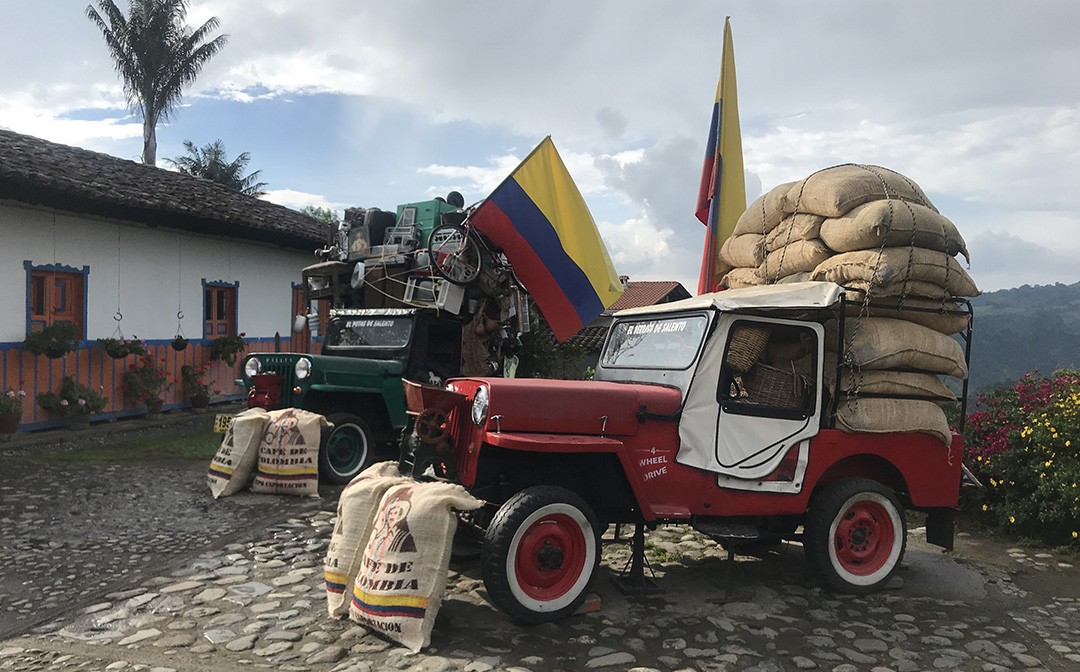I must declare my hand. I adore Colombia. I love to tell people about the incredible countryside and wildlife, the bustling and vibrant cities and the country’s amazingly warm, welcoming people. However, the two questions I am always asked are, “Is it safe?” and “What about Escobar and the drugs?” You might think I would find this frustrating, but quite the contrary. I love it because I’m always looking for a different angle, a side story or a surprise in a country, and those questions tell me that this marvellously diverse and exhilarating destination is still a mystery to most, waiting to be discovered. While in so many people’s minds it is still defined by its chequered mid-80s, early 90s drug-related reputation, the reality of modern Colombia could not be more different.
Bogotá has all the allure of a cosmopolitan European capital. The Gold Museum and the Botero are my favourites but there is so much more to this energetic city. I’ll leave Lonely Planet or Rough Guides to provide the intimate details. Suffice to say there is a wonderful atmosphere and vibrancy about Bogotá and you can’t fail to be swept up in the excitement. For food and drink and dining of the highest quality, the nightlife of this glittering capital city is as wild or sedate as your tastes will allow. La Candelaria is the historic heartbeat of the city where museums, churches, restaurants, coffee houses and theatres converge – a must see.
Medellín is a city everyone has heard of but few people from outside Colombia really know. On arrival, it is easy to fall into the trap of seeking the narcotics back story or becoming a voyeur at the locations of Escobar’s excesses and atrocities. While that dark chapter in history should not be ignored, you will find there is a strong heartbeat to this city whose people are so keen to show it in its true, friendly and welcoming light. A visit to La Comuna 13 will demonstrate what I mean. This barrio, perched on the mountainside west of the city centre, was once a no-go area of Medellín. Today it is a vibrant, proud and hugely welcoming place. Riding the escalators up the steep network of passageways and homes you pass graffiti murals trumpeting the passion and love of the community. Every mural tells its own personal story and a knowledgeable local guide will explain the fascinating context of these stunning artworks. A stop off for a well-earned drink on the return journey will seal this place in your heart, not to mention the great coffee served here by the most welcoming and passionate local staff.
If museums are not your thing, how about an Amazonian adventure? Deep in the south, on the Brazilian and Peruvian borders, lies the town of Leticia. With influences from all three countries, Leticia is the frontier town for some of the most unspoilt rainforest in the world. Exploring the river tributaries, visiting local indigenous settlements and seeing some of the most awe-inspiring wildlife are all “must dos.” Sustainability is vital to this area and it is hugely encouraging to see responsible tourism is not just a passing fad – it flows through everything from reserve management to low carbon footprint accommodation to reinvestment in the cultural fabric of this wonderful region.
Moving back north, the Colombian coffee region offers the traveller a completely different experience. Deep in the coffee plant laden hills of the central hinterland, lie the departments of Quindío, Caldas and Risaralda – Zona Cafetera. Here mountains, nature reserves, traditional haciendas and beautiful villages sit side by side providing an experience as rich as its signature crop. It is a classic case of where does one start. My favourite town is Filandia; quieter than its more famous neighbour Salento, this colonial gem has beautiful architecture surrounding a traditional square populated with bars, restaurants and coffee houses.
Venturing into the hills and valleys, a traditional coffee hacienda stay is another absolute must. The best creatively combines a working coffee plantation with a comfortable boutique guest experience blending desirable modern comforts with traditional décor and cuisine. Set in some of the most beautiful countryside, rich in wildlife and flora, hacienda life moves at the pace you decide – there is always a welcoming hammock and a cocktail awaiting you after your strenuous coffee tour.
Cartagena des Indias is the northern jewel in Colombia’s crown. Steeped in colonial history, Cartagena has some of the most impressive architecture in South America, often compared favourably with Cuzco in Peru. The Old Town, a UNESCO World Heritage Site, has a heady mix of palaces, monasteries, churches and large mansions within a walled inner centre. The stunning structures are complemented by restaurants, bars and clubs all within a relatively easy walk.
So that first question…is it safe? Safety to some extent is a personal judgement and I can only speak for myself. I felt as safe here as anywhere else I have travelled across six continents. Can I guarantee safety? Of course not, but I know I have felt more unease in places far closer to home than here, over five thousand miles away.
As for Escobar, Colombia and Medellín in particular has and continues to move on. This amazing city – its architecture, its people and its warmth are its defining attributes which are now being actively allowed to flourish without the clouds of recent history. Vibrant, welcoming and steeped in culture – this is today’s Medellín.



